Student debt can feel like a never-ending game of Whac-A-Mole, with loans popping up just when you think you’ve got a handle on things. With the average graduate drowning in thousands of dollars of debt, it’s no wonder many wonder if they’ll ever see the light at the end of the tunnel. But don’t worry, help is here!
Navigating the murky waters of student loans doesn’t have to be a solo expedition. From forgiveness programs to smart repayment strategies, there are tools and tips that can lighten the load. Ready to kick that debt monster to the curb? Let’s dive into the world of student debt help and discover how to reclaim financial freedom while keeping a smile on your face.
Table of Contents
ToggleUnderstanding Student Debt
Student debt represents a significant financial hurdle for many individuals. Grasping the different types of loans and the current landscape of student debt aids in navigating this challenge.
Types of Student Loans
Federal student loans include Direct Subsidized Loans, which offer interest assistance for eligible undergraduates, and Direct Unsubsidized Loans, which charge interest from disbursement. Federal PLUS Loans cater to graduate students and parents, with higher limits than undergraduate options. Private student loans, provided by banks or credit unions, often feature variable interest rates and diverse terms. Each loan type affects repayment and forgiveness options, making it crucial for borrowers to understand their choices.
Current Student Debt Statistics
Statistics reveal startling figures about student debt. As of 2023, approximately 44 million borrowers owe about $1.7 trillion in federal student loans. Graduates owe an average of $37,000 upon completing their degrees. Strikingly, this debt causes financial strain, impacting personal decisions such as homeownership and retirement savings. Additionally, about 14% of borrowers are in default, emphasizing the need for effective debt management strategies.
Available Student Debt Help Programs

Numerous programs exist to assist borrowers in managing student debt effectively. Understanding these options can facilitate a smoother path toward financial freedom.
Federal Student Loan Forgiveness
Federal Student Loan Forgiveness programs offer significant relief for eligible borrowers. Public Service Loan Forgiveness (PSLF) targets individuals working in qualifying public service jobs. It requires 120 qualifying monthly payments while employed full-time. Teacher Loan Forgiveness aids educators with up to $17,500 in forgiveness after five years of teaching in low-income schools. Income-Driven Repayment (IDR) plans can also lead to forgiveness after 20 to 25 years of repayment, depending on the plan. Eligibility for these programs typically depends on the borrower’s employment and repayment history.
State-Level Initiatives
State governments implement various initiatives to tackle student debt. Some states provide loan repayment assistance to graduates in high-demand fields. For instance, nursing, teaching, and public health professions can benefit from such programs. States like California and Illinois offer specific loan repayment programs, encouraging graduates to work in underserved areas. Additional programs may include tax credits or grants that help reduce the overall student debt burden. Engaging with state-specific resources often results in more manageable financial obligations for graduates.
Tips for Managing Student Debt
Managing student debt requires proactive strategies and resources to ensure financial stability. Individuals can successfully navigate this journey by prioritizing effective budgeting and enhancing their financial literacy.
Budgeting Strategies
Establishing a clear budget helps individuals monitor their spending and savings. Identifying fixed costs, such as rent and utilities, alongside variable expenses enables a realistic assessment of financial obligations. Allocating specific amounts for loan repayments and discretionary spending facilitates better control over finances. Creating an emergency fund also acts as a safety net for unexpected expenses, which can otherwise lead to additional debt. Utilizing budgeting tools, like apps or spreadsheets, increases awareness of spending habits. Observing these strategies leads to more disciplined financial behavior, ultimately reducing the burden of student loans over time.
Resources for Financial Literacy
Improving financial literacy creates a foundation for sound money management. Numerous resources exist, including online courses and workshops that cover budgeting, saving, and investing. Websites like the National Endowment for Financial Education (NEFE) offer free courses tailored to different knowledge levels. Many community colleges also provide financial literacy programs aimed at young adults. Engaging with financial advisors can prove beneficial, providing personalized advice and strategies. Connecting with peers in similar situations fosters shared learning and accountability. Utilizing these resources equips individuals with the knowledge needed to make informed financial decisions, directly impacting their ability to manage student debt effectively.
The Impact of Student Debt on Young Adults
Student debt significantly influences young adults’ lives. Current statistics indicate about 44 million borrowers owe approximately $1.7 trillion in federal student loans. Average debt for graduates stands at around $37,000, creating considerable financial stress that impacts every aspect of life.
Mental Health Considerations
Mental health issues often arise from financial stress linked to student debt. Anxiety and depression can significantly increase when individuals face overwhelming loan repayments. Many borrowers report feeling like they’re trapped in a cycle of debt, leading to decreased motivation and overall well-being. Professional help and support networks can assist in managing this mental strain. Engaging in community resources and mental health programs helps individuals maintain a healthier mindset as they navigate their financial challenges.
Career Choices and Opportunities
Career choices are routinely influenced by the weight of student debt. Graduates sometimes select higher-paying jobs over those aligned with their interests or aspirations simply to manage loan repayments. This pressure can stifle passion and creativity, affecting job satisfaction and fulfillment. Many young adults delay critical life decisions, such as homeownership and starting a family, due to financial constraints. Seeking careers with loan forgiveness programs or high-demand fields can create pathways to alleviate some of the financial burdens. By considering these factors, individuals can make more informed choices about their professional futures while addressing their student debt.
Navigating student debt can feel overwhelming but it’s essential to remember that support is available. By exploring various repayment options and forgiveness programs graduates can find a path to financial relief. Taking proactive steps like budgeting and improving financial literacy will empower individuals to manage their debt effectively.
It’s crucial for borrowers to stay informed about their loan types and available resources. Engaging with the right programs can significantly ease the burden of student loans and open doors to financial freedom. With the right strategies in place individuals can reclaim control over their financial futures and pursue careers that align with their passions without the weight of debt hindering their choices.



